Matador Network's Blog, page 2140
February 20, 2015
US habits I lost moving to China

Photo: Mills Baker
1. Unconsciously displaying ‘Resting Bitch Face’
For my first few weeks in China I looked dazed, confused, and offended (probably from the rancid sewage wafting off the streets). I walked around wearing nervousness and discomfort on my face, which seemed to make people even more wary of helping the foreigner. Eventually though, I learned to smile and nod at everyone, partially as a way to make up for my inability to communicate in their language, but also as a way to seem more approachable. My smile put them at ease people tried to speak to me even if they only knew a few words.
3. Thoughtlessly blabbering
It was rare to find a person in China who understood the phrase “What’s up?” but I often found people who could say a couple words or carry on a conversation for a few minutes in English. I learned to speak at an uncomfortably slow pace, but it meant that I could have a real conversation. By pronouncing every “t” and “d” that I usually slurred through in everyday speech and pausing for breaks, we were able to talk about more meaningful subjects like feminism and public education. Even saying a few words like nǐ hǎo (hello) and nǐ jiào shénme míngzi (what is your name) in Mandarin made locals more interested in speaking English with me.
3. Talking politics
The longer I stayed in China, the more I learned about the One Child Policy, communism, corruption, and other controversial topics. The more I listened, the more I realized that my limited knowledge as an outsider meant I couldn’t offer meaningful commentary on China’s political and environmental situation. Sometimes people were interested in my opinion, but I had less to say than I did when I was back in America — full of assumptions and judgments.
Instead I got really good at talking about the weather.
4. Looking down on service workers
The Chinese care little for those who look down on others. Through watching my hosts, I learned to be more attentive and polite to receptionists, waiters, and other service people. Most people in China come from humble origins and respect others who work hard, no matter what position they’re in. I was used to getting by on a quick glance and a smile, forgetting people’s names and faces almost instantly. Although I was still terrible with names, especially ones in Chinese, we had more meaningful and interesting interactions, making my trip more memorable.
5. Eating fried chicken
Adventurous eating isn’t my strong suit as a traveler. But at the insistence of my Chinese friends, I explored foods that would normally make me gag — like escargot from Pizza Hut. Sometimes we ate dishes of noodles and soups filled with plants or animals I couldn’t recognize. Overall I came out liking more authentic dishes like Peking Duck, Chow Fun, and Xiao Long Bao, no longer satisfied with fried rice and orange chicken. But I still draw the line at fish heads, chicken feet, and pig tongue.
6. Hating conformity
In America, we often to try appear different, assert our individuality. We get obnoxiously drunk, make a ruckus on the subway, and cause scenes in public without getting more than dirty looks. However, sticking out in China isn’t a good thing. And, as westerners, we already attract a lot of attention.
So I learned how to be more like everyone else. I put away my lax California uniform of tank tops and flip flops. I ordered fewer taro buns and milk teas from the Taiwanese pastry shops so I wouldn’t seem like a fat American. And I tried to be more humble by deferring compliments about my height, perfect teeth, and killer dance moves in an effort to appear more self-deprecating, which is hard for someone with an ego as big as mine.
7. A lax approach to text messages
Back in the States, it could take me a couple days or even a week to respond to texts or emails, but I quickly learned that kind of timeframe doesn’t work for the Chinese. As soon as I met someone new, they wanted to connect over WeChat — and they seemed more interested in texting over the app than talking face to face.
After missing a few lunch dates and karaoke outings, I learned that you need to stay attached to your phone and respond immediately, if you expect to have any friends at all. If you ignore someone for more than a couple days, they’ll probably forget about you. 
Two words: GO CUBA
Follow Matador on Vimeo
Follow Matador on YouTube
We danced and partied at the infamous Las Parradillas Fiesta on Christmas Eve. I caught a type of poison ivy from brushing the venomous Guao plant (while trying to get some footage). We got lost wandering the streets of old Havana meeting fantastic people along the way. If you get the chance to visit Cuba, GO! 
What to do in Savannah in your 20s
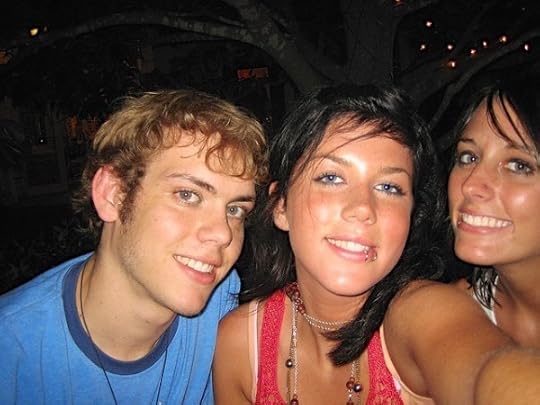
Photo: Savanna Smiles
1. Survive a St. Patrick’s Day.
Wake up by 4am to cook a messy plate of bacon and scrambled eggs, throw back shots of Jameson, and make your descent downtown for the biggest clusterfuck of the year. Yes, it’s the largest St. Patrick’s Day parade in the United States, but it’s not the parade that you look forward to. It’s the one million people pressed together within a few streets wearing green, ironic tees draped by cheap beads and stained by even cheaper beer that gets you going. This green sea triggers a reaction in your brain that leads you to a pub at 11 that morning, sloshing back two ibuprofen with an Irish car bomb and powering through to the next bar like a goddamn staggering hero.
There’s even the rare phenomenon of drinking yourself sober. This means that the body has had so much to drink that alcohol no longer has any effect. It’s experienced by the true heroes of St. Patrick’s Day — the warriors who make it to nightfall.
2. Completely relate to Widespread Panic’s “Up All Night.”
Which is about Savannah, by the way. If you’re here long enough, sunrises will become sunsets — so you’ll understand that this is not a lifestyle limited to just the drunkards, partiers, and geekers. Savannah could also be known as the city that doesn’t sleep, but that wouldn’t be fair.
She loves her beauty rest — it just happens to be in the mornings.
3. Eat yourself sober at Parker’s Market Urban Gourmet.
It’s not gas station food. It’s gourmet gas station food. Plus, you’ll most likely run into everyone you just bid a drunken farewell to at the bars. At Parker’s you’ll feel like you’re right back in the mess of Congress Street, just with brighter lights, more artisan cheeses, freshly baked croissants, and pomegranate chocolate bars. But who really wants that at 3:30 in the morning after hours of drinking? Get the food bar to slam your Styrofoam to-go box with greasy hash browns, soggy cheese grits, and a chicken biscuit slathered with sausage gravy. Sure, it’s sloppy. But it’s gourmet sloppy.
4. Have a secluded religious experience inside the Cathedral of St. John the Baptist.
Tourists in Savannah are drawn to the Cathedral of St. John the Baptist like there’s some sort of Catholic gravitational pull. In order to be inside alone, you’re going to have to go at the brink of dawn. In other words, sit on the front steps and wait for the doors to unlock. This may only allow 30 minutes of solitude in the cathedral before people file in for morning service and tourists come to test their camera’s flash capabilities. But until then, the only echoes you’ll hear will be from the priest positioning offering trays and placing fresh candles in Baroque style candlestick holders while light breaks through the stained glass.
Maybe it’s religious intent to form a stronger spiritual connection, or inspiration stemmed from a love of French Gothic architecture — or maybe it’s coming down from a night of tripping on acid and you wound up in the cathedral barefoot. Either way, a silent St. John’s will connect you to something, whatever that may be.
5. Find an excuse to drink even more rum at the Tybee Island Pirate Fest.
Juggling pirates, rum, magicians, puppeteers, weaponry demonstrations, rum, parades, toddlers in Captain Jack Sparrow attire, rum, the beach. Rum. Need I say more?
6. Get the shit scared out of you at Grove Point Plantation.
Driving down Grove Point Road is the closest you’ll come to entering a time warp. After all, it is where the original Cape Fear was filmed as well as where Black Beard once had a slave compound.
There are no houses at the end of the road — just marshland absent of any life besides a stray alligator. The giant wrought iron gate with “GROVE POINT PLANTATION” in bold letters is enough to satisfy many searching for a cheap thrill. But if you’re a more-intense thrill seeker, you can hop the gate and walk the swampy, half-mile walk to the old slave houses.
Instagram it, observe the ectoplasm thing that’s smeared across the photo, and get the hell out of there.
7. Be a pedicabber.
Nothing says ‘detox’ better than sweating out the previous night’s debauchery by hauling around a bunch of fat tourists on a bike taxi service for tips.
8. Feel like a little kid again at SCAD’s Chalk in the Park.
Savannah College of Art and Design has their annual Sidewalk Arts Festival in Forsyth Park every spring. Some are depictions of the inner turmoil an art student struggles with to make rent while others are of Grumpy Cat and Elvis Presley’s head on a bee’s body with the caption “BEE-VIS.”
No matter the art, the festival will leave you holding a plastic cup of PBR and reflecting on your own chalk-art abilities, which are probably limited to smiley faces and maybe a penis.
9. Rent a haunted house.
You haven’t truly lived in Savannah if your experience is vacant of ghost stories. Maybe it’s the famous book-turned-movie “Midnight in the Garden of Good and Evil.” Maybe it’s the fact that a huge chunk of the city is built atop mass graves from the Yellow Fever. Or maybe it’s because we have a huge pile of skeletons hidden in our closet — AKA, under Forsyth Park. Whatever it may be, Savannah is a spooky place. How else would we have worked our way up to the second most haunted city in America? (Don’t get too cocky, N’awlins).
Savannah prides itself on historic preservation. This means that if a house is in the Historic district, chances are — surprise! — it’s a historic house, complete with lanterns on the front porch as well as old ironing boards in the kitchen that inevitably have a ghost behind them.
Just don’t be a dick. If the spirits are acknowledged and paid respect, they’ll normally end up being a pretty okay, yet nonetheless creepy, roommate who doesn’t share any rent.
10. Furnish your haunted house with the gems you found alley shopping.
Savannah is comprised of the grid system. This means after every road is an alleyway. And when I say alleyway, I mean a long strip of available free shit that can furnish your said haunted house. It’s like dumpster diving — but better.
Couches, kitchen islands, rugs that only smell kind of like cat piss, brand new entertainment centers, artwork thrown away by perfectionist art students, kitten coffee mugs, steel wall hangings, shower caddies in the shape of whales, a grill that doesn’t work — really, it’s like striking a poor, 20-something’s gold mine.
Soon you’ll figure out a method to your alley shopping, such as which ones have better stuff as well as which nights you should hit up certain alleys. You may even make some friends in the alley shopping community. Just be discreet about it. If pulled over by the police, you’ll be hammered to admit you’re only lurking through alleys because you’re high on pot or bath salts.
11. Bitch about how toxic this town is.
“I dunno, man. I need to get out of here. It’s like a black hole of drugs and working in fine dining.”
12. Bitch about how other places aren’t toxic enough.
Living in Savannah will make you carry a type of arrogance — like you’ve conquered a toxic relationship, leaving your less fortunate comrades in a pit of despair. But it’s not long ’til you realize most other places are either too dirty, too clean, too structured, too basic, too boring, or too fake. Savannah, on the other hand, is a beautiful woman with a dirty face. She makes you love her too much but is stingy with the love she returns.
If you ever break ties with her, you’ll soon find that your heart is still tangled in a bed of Spanish moss on wet cobblestone streets. Sure, she’ll fuck you over, but she’ll do it in the most beautiful way possible. 
Learned to drink in Germany?

Photo: CityBurns
1. You once had an awful Jägermeister phase.
For a period, Jägermeister was your one true love and you wouldn’t settle for anything else at a party. Then one day, your true love turned on you. Since then, the mere thought of it evokes nothing but nausea.
Before the Jägermeister phase, you had an equally awful Vodka-Bull phase (sleeping is overrated anyway) and before that a horrible Bacardi Breezer phase. You quit all of them and settled down for wine and beer. They’re more reliable and don’t make you puke so easily.
2. You panic when your friend doesn’t look into your eyes while clinking glasses.
If you don’t look each other straight in the eyes, it’s a fact that both of you will be punished with bad sex for 7 years. Though nobody knows if that means bad sex with each other or bad sex with your actual partner…
This tradition can become quite stressful if you’re drinking with a big group. You’ll probably miss looking in the eyes of at least one person, and it always takes ages till you finally get to take a swig of your beer.
3. You equally panic if someone wants to clink glasses and cross their arms with the people on either side of them.
Not doing this won’t result in bad sex for seven years, but in bad luck. Probably forever. These superstitions might be the reason why we Germans always come to parties so early. Otherwise we’d never be done with clinking before the end of the party.
4. You can open a beer bottle with anything.
Spoon, knife, park bench, teeth, buttocks…Once you’ve mastered the technique with one tool, the whole world is your playground! There’s just this one strangely-shaped, kind of triangular thing that gives you kind of a hard time…What was the name of it again? Oh yes, bottle opener!
5. Beer choices are a kind of religion.
Thank God most of your friends drink the same sort beer. It’s probably a kind of evolutionary prevention mechanism so that you don’t lose too many males in useless fights about whether pale beer, wheat beer, or dark beer is better.
In an emergency however, you’ll drink whatever is offered to you…as long as it contains hops and malt.
6. Only German beer is true beer.
That’s the one thing you typically all agree on. From a young age you’ve learned this from your father, who learned it from his grandfather, who didn’t even know that there was something called “beer” outside of Germany. You might not have much national pride, but you are proud of your beer and you’re proud of being part of the nation that created beer in its present form. And you’ll fight anybody who disagrees.
7. On the other hand, you are not exactly a wine connoisseur.
The cheapest one on the lowest shelf in Aldi will suffice.
8. You were allowed to drink before you were allowed to drive a car.
The legal drinking age for beer and wine in Germany is 16, but you can’t get your car driving licence until you’re 18, which is also the legal drinking age for spirits. Actually that’s pretty great, because it means nothing stands in the way of a real party to celebrate your successfully-passed driving test.
9. You’re overwhelmed with joy when you’re asked for ID while buying wine in the supermarket around the corner (if you’re a woman).
You forgot to put your makeup on and that’s the result. But to be honest, they’ve known you for years and probably just want to make you feel good about yourself by asking for ID. But still, it feels damn good to be considered for so much younger than you really are.

More like this: 26 signs you were born and raised in Germany
10. A Radler (basically) doesn’t contain alcohol and can be drunk at any time of day.
A Radler (half beer / half lemonade) is said to be one of the most refreshing drinks there is. Also, you can easily get back on your bike after one liter (cyclist is Radler in German) without being too drunk to pedal in a straight line. Beer is food anyway, right? And beer with lemonade is just lunch with an alcohol-free drink.
11. You can’t trust your taste in music when you’re drinking.
While you’re usually known for your sophisticated music tastes, as soon as you’re slightly drunk, good old German Schlager music seem to be the best party music ever. That’s right, Schlager music — the cheesy, old-fashioned stuff that usually only your grandparents listen to.
If things get really bad, you even start dancing to Mallorca Schlager, where D–list celebrities try to extend their 15 minutes of fame to 20 minutes with the help of computer technology and high quality lyrics like, “And the red horse just turned around and fended the fly off with his ponytail. But the fly was not stupid and made summ, summ, summ and flew around the horse with a lot of buzzing. Schalala.”
Oh Germany, you country of poets and thinkers!
12. Flaming fire tongs punch is your favorite Christmas ritual.
But not just the drinking part! There’s an old German movie from the early 1940s with the same name, Die Feuerzangenbowle. It starts with a couple of older gentleman drinking the punch and reminiscing about the good old days at school and all the pranks they played on their teachers. One of the men never had this privilege, as he was homeschooled. So in their intoxication, they decide to send him back to school. Shortly after he arrives, he becomes the nightmare of his teachers…
Especially at German universities, it’s customary to watch the movie at Christmas time, while — of course — drinking some Feuerzangenbowle.
13. No going out without staying in first.
Drinking in bars and clubs in Germany is generally pretty expensive, so meeting at a friend’s place and pre-partying is common. Often you also just get stuck there and have a better time than you could ever have in an overcrowded, sticky-floored club.
14. You are a master at pretending to be sober.
In case you made it out of your friend’s house, you face the next challenge: most clubs don’t exactly appreciate it when their guests arrive drunk. Luckily, you’re amazing at pretending to be sober for the one minute you have to look in the doorman’s eyes. This is also a very useful skill to have when sneaking back into your room at home. You parents still think you are young and innocent and don’t drink.
15. Being drunk makes you an international culinary expert.
American fast food, Turkish döner, Arabic falafel, Italian pizza, German currywurst. God bless German culinary multiculturalism — it’s cured SO many hangovers. You also know exactly where you can get each food at which times. You might forget the way home, but you’ll never forget where to get food!
16. Oh those summer-barbecue-beer nights.
Though, thanks to the unpredictable weather, they more often turn into game nights in someone’s living room. Luckily, many German flats have a roofed terrace or balcony. As soon as you move out of your parent’s house, you know you’ll want the same for your own apartment.
17. Drinking is not always just about getting wasted.
More often it’s only a side effect of social gatherings. You just want to enjoy a bottle of beer or a glass of wine with your friends, often together with a good meal. If it turns out to be one of those epic party nights, so be it. If not, you’ll be just as happy.
18. You know only a certain amount of alcohol can make a German man dance.
If, sometimes, it would be better for their dignity to just to stay in the corner and keep watching the party crowd from afar, is a point worthy of discussion some other time.
19. Every December, you gain 5 kilos due to your daily mulled wine consumption at various Christmas markets.
There are just too darn many of them in Germany. And at least one of them lies on the way between your office / university and home. 
5 truths about San Francisco

Photo: Matt Bidulph
1. In terms of income equality, the city is as unequal as Rwanda.
Recently, San Francisco’s Human Services Agency used the Gini Coefficient, a popular formula employed by the World Bank, the CIA, and other groups, to measure how San Francisco’s income inequality compared to other cities and countries. The formula gives a region a score of 0 if every person in its population shares wealth exactly equally. The scores increase towards 1 the more the wealth is held by a smaller portion of people. Using this formula, San Francisco scored a .523, ranking it slightly more unequal than Rwanda (.508) and only slightly more equal than Guatemala (.559). To add more perspective, countries like Sweden and Denmark scored around a .25, cities like Amsterdam, London and Paris all scored around a .32., and the United States as a whole scored a .45.
This income inequality also has a racial component: the average white San Franciscan makes three times more money than the average black resident, 66 percent more than the average Latino resident, and 44 percent more than the average Asian resident.
2. The average price for a year of rent is almost equal to a starting public school teacher’s salary.
A new report from the data company Priceonomics found that the median rental price of a one-bedroom apartment in San Francisco, as of June 2014, was $3,120, totaling to a yearly housing price of $37,440. The average starting salary for a San Francisco Unified School District teacher is $47,000. The numbers exemplify how the city has become essentially unlivable for teachers, service workers, and other employees with middle-class salaries. Many of these workers come from nonprofit organizations: almost one quarter of non-profits in San Francisco have had to leave the city as a result of higher rent prices. From 2008 to 2012, the Federal Reserve Bank of San Francisco found that the city lost approximately 30,000 workers with incomes of less than $35,000 a year.
3. Almost a third of the city’s homeless residents identify as LGBTQ.
Though San Francisco may be one of the most gay-friendly cities in the country, recent numbers indicate that the city hasn’t necessarily taken care of its LGBTQ population as much as you’d expect. In the city’s 2013 count of its homeless population, the city for the first time asked information on sexual orientation. The result? 29% of the city’s 6,436 homeless residents identified as LGBTQ, nearly twice the national average. LGBTQ youth who intentionally seek out San Francisco for its LGBTQ resources may partially contribute to the abnormally high number. However, the survey found that many of the city’s homeless LGBTQ residents were not runaway youth, but adults, seniors, and long-time residents, leading many to believe that it’s actually the city’s housing and eviction issues that may be at fault.
According to the Anti-Eviction mapping project, the Castro neighborhood was hit the hardest by the city’s recent flood of evictions: from 1997-2013, 837 units in the area were evicted. As housing in the city evolves, activists worry that San Francisco may become a city packed with resources, social services, and community centers for an LGBTQ population that can no longer afford to live there.
4. It’s one of the worst cities for African-Americans to economically succeed.
New Geography, a start-up that analyzes cities and quality of life, ranked the country’s major metropolitan areas based on how easily black communities could economically thrive. The ranking looked at four typical measures of middle class economic success for black communities: homeownership, entrepreneurship (measured through self-employment rate), median household income, and the change in the African-American population from 2000 to 2013.
San Francisco placed 48 out of 50. While all other racial groups in the city have median incomes over $50,000, the median income of black households is $30,840. And though the city-wide unemployment rate has decreased to only 4%, the lowest rate in years, the unemployment rate for black youth is five times higher at 20%. The black population in the city, almost half of what it was in 1950, decreased an additional 9% from 2000-2013, and now constitutes only 6.3% of San Francisco’s total population. Meanwhile, San Francisco’s jail population is disproportionately 56% black.
5. It’s the most educated city in the United States…yet its upper-class no longer invests in the city’s public education system.
San Francisco has the densest concentration of educated workers in the United States: over 7,000 college-degree-holders per square mile. Almost 75% of San Francisco residents hold a bachelor’s degree and almost 20% have graduate/professional degrees. And yet, the city’s public education system has been largely abandoned by the city’s white, upper-class population.
San Francisco ranks third among American cities with the highest private school enrollment, with enrollment almost at 20%, even higher than places like Manhattan and Los Angeles. The majority of students attending these private schools are white and upper-class: though white children account for 33 percent of the city’s overall population, they only represent 12 percent of public school students. Half of the city’s elementary schools have white populations below 10%. A quarter have white populations below 2%.
Many argue that this economic and racial segregation drives resources away from the public school system. This can lead to further educational inequalities. For example, according to a 2014 report from the US Department of Education, San Francisco schools with a majority student of color population were far more likely to have inexperienced teachers, and students of color learning in segregated environments were far less likely to graduate. 
North American countries quiz
US cities for the smart and poor

Photo: 55Laney69
IT’S NOT REALLY SURPRISING that new graduates are looking for a better life outside of typical economic and technological epicenters such as San Francisco, Silicon Valley, and New York City. Who really wants to pay $2,500 in rent for a stuffy apartment, and face fierce competition with people from around the world for menial-pay jobs? If you’re smart — or just interested in working for a STEM company — but too broke to “make it” in the big cities, here’s a short list of US locations where the job opportunities are hot, the salaries are plentiful, and the cost of living is well within your means:
1. Omaha, Nebraska

Photo: Silicon Prairie News
Industry leaders: ConAgra, Berkshire Hathaway
Startups: SkyVu, BuyNow
Median salary for an Associate IT Analyst at ConAgra: $55,950
Average price of a 1-bedroom apartment: $663
2. Greenville, South Carolina

Photo: TedXGreenville
Industry leaders: GE, BMW
Startups: The Iron Yard
Median salary for an Engineer at BMW: $89,370
Average price of a 1-bedroom apartment: $530
3. Detroit, Michigan

Photo: Moon Man Mike
Industry leaders: Blue Cross Blue Shield of Michigan, Computer Consultants of America
Startups: Detroit Labs, Locqus
Median salary for a Web Software Developer at Computer Consultants of America: $78,749
Average price of a 1-bedroom apartment: $602
4. Pittsburgh, Pennsylvania
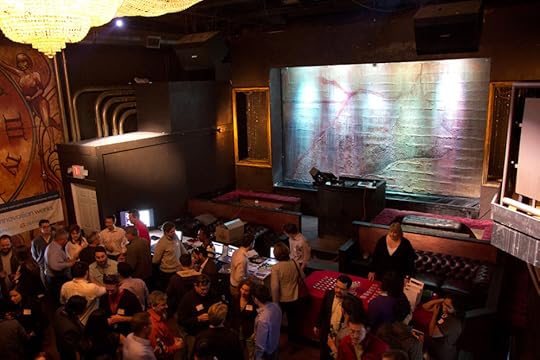
Photo: TechCocktail
Industry leaders: Google, IBM, Apple, Intel
Startups: NoWait
Median salary for a Software Engingeer at Google: $114,292
Average price of a 1-bedroom apartment: $610
5. Cedar Rapids, Iowa

Photo: cr artist
Industry leaders: Toyota, Alliant Energy
Startups: 512Creative, Bandwidth Pool
Median salary for an Engineer I at Alliant Energy: $64,144
Average price of a 1-bedroom apartment: $500 
H/T: Uncubed
Salary information source: GlassDoor
Rent comparison source: RentJungle
List of airline surf baggage fees
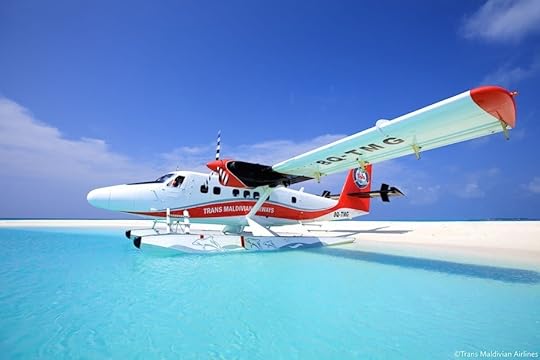
© Trans Maldivian Airlines
Unfortunately surfboards are large and unwieldy, which makes them tricky for airlines to deal with; subsequently flying with a board can be an expensive and complicated affair, with various hidden costs and fees. Some airlines are straight up about their fees, while others present a pretty face but hide further terms away in the small print on their websites: we’ve all heard horror stories of unsuspecting surf bums being charged more in fees to carry their boards than the original ticket price of the flight.
To help preserve your financial wellbeing and save your credit card a hefty hit, LUEX Surf Travel experts have investigated almost every airline flying to any surf destination you can think of, and come up with this nifty alphabetically ordered list. Simply check which airlines service your surf spot of choice, and scroll down to check their policy on surf boards.
Please note that while all information is correct at the time of publishing, airlines are free to change their baggage regulations at will, so it is always worth double checking before booking. 
This article originally appeared on LUEX Magazine and is republished here with permission.
Airline
Accept Surfboards?
Cost
Details
More Information
URL
Aeroflot
Yes
Free – €150
Surfboards aren’t explicitly listed, but one boardbag should be included in your free baggage allowance (as with bikes/skis/snowboards). You must call Aeroflot to request carriage though.
Extra pieces of luggage and oversize/weight baggage will be charged.
More Info
Aer Lingus
Yes
Free – €30/€40
Boards fly for free to/from North America, or for €30 (each direction) to all other destinations if paid in advance; fees are €40 if paid at the airport.
Max board length 274cm on international flights, or max 204cm on regional flights.
More Info
Aero Mexico
Yes
$40 – $50 USD
$40 if paid in advance, or $50 at the airport
More Info
Air Asia
Yes
Varies
Score a 50% discount and the option to add 15-40kg extra weight by booking online. Max Board length 274cm.
Paying at the airport costs more and limits you to 20kg extra weight.
More Info
Air Berlin
Yes
Free
1 boardbag can be taken as your free baggage allowance, though you must notify the airline at least 24 hours before flying.
If you exceed the number of pieces in your free baggage allowance, you’ll be charged €50-75. No sports baggage on JustFly tickets.
More Info
Air Canada
Yes
$50 USD/CAD
Boards under the maximum linear dimensions can be counted as your free baggage allowance, but you will be charged a handling fee per board in each direction.
Boards must be less than 203cm long, and under 277cm total linear dimensions (lenght + width + height)
More Info
Air China
Yes
Free – $150+ USD
Boardbags can be counted as your free checked baggage allowance if total linear dimensions (length + width + height) are less than 158cms.
If your board exceeds 158cm total linear dimensions then you will be charge an oversize baggage fee. Charge varies by route, size and weight, but will likely be $150+ USD.
More Info
Air France
Yes
€55-100
Boards 107-300cm long can be carried, though you’ll be charged €55-€100 each way, depending on route.
You must notify the customer service department at least 24 hours before flying, but you can only pay at the airport.
More Info
Air India
Yes
Varies
Fees for board carriage are 50% of the normal excess baggage fee for the route.
It’s a good idea to call the customer service department and confirm fees when booking your flight.
More Info
Air Malta
Yes
30
In principal surf equipment can be carried free in addition to your normal checked baggage allowance, though you should confirm this with the airline when booking.
More Info
Air Mauritius
Yes
Free – €200
Boards under 200cms (length + width + height) and 23kg fly for free.
When applicable, charges levied vary by route – from €55 to €200 each way.
More Info
Air New Zealand
Yes
Free
Boardbags up to 2 metres long can be taken as part of your free checked baggage allowance, plus multiple boards are allowed in one bag.
200cm is the normal maximum length allowed, but occasionally items up to 250cm long can be taken (by prior arrangement).
More Info
Air Pacific
Yes
Varies
You can take boards up to (total linear dimensions) 277cm, but fee (and currency) varies depending on route and destination.
Fees are usually around 50-100 AUD
More Info
Air Seychelles
Yes
Free
Boardbags up to 158cm long and 15kg in weight fly for free.
You have to sign a waiver that Air Seychelles is not liable for any damage during transit.
More Info
Air Tahiti Nui
Yes
Free
Boards up to 250cm and 23kg fly free (in addition to your normal checked baggage allowance)
More Info
Air Vanuatu
Depends on plane
Free
Boards up to 250cms can be carried free as part of your checked baggage allowance on international flights, and boards up to 150cms can be carried free on most domestic flights. However, some smaller planes on certain routes lack the capacity to take surfboards.
Call airline to check regulations on your route.
More Info
Alaska Air
Yes
$25 USD
One boardbag containing up to two boards can be taken for the normal checked baggage fee. Size restrictions vary by route.
On Alaska Airlines flights 1-999 the boards up to max 292cm in length (alone) can be carried; on flights 2000-2999 and 3440-3499 the maximum combined linear dimensions (height + length + width) may not exceed 292cm.
More Info
Alitalia
Depends on route
€75 – $260 USD
Boards up to 300cm can normally be carried for a fee, though the amount and currency charged varies by route.
Not all planes have room for boards, so you must check with the airline when booking.
More Info
American Airlines
Yes
$42.50 – 150 USD
You can take boards up to 320cm total linear dimensions for a fee of $150 USD, other than flights to/from/through Brazil.
When travelling to/from/through Brazil, the first board is charged at $42.50 USD, and $85 USD for any extra boards.
More Info
Ana
Yes
Varies
Boards up to 203cm total linear dimensions travel free (if within your checked baggage allowance). If you take a board in addition to your baggage allowance, you’ll be charged a fee (amount varies on route) calculated by weight rather than size.
You must call the airline when booking, as fees vary by route and not all planes can accommodate surfboards.
More Info
Arikair
Yes
Varies
Surf boards can be carried subject to a fee, which depends on route.
Call airline to confirm chargs on your route when booking.
More Info
Asiana
Yes
Free
One board can be carried free if within the weight and piece imit of your checked baggage allowance. There are no extra fees for oversize bags, but you will be charged if you breach weight limits.
More Info
Austrian Air
Yes
€50-100
Boards up to 2m ilong can be carries for €50 (each way) within Europe, or €100 (each way) on intercontinental flights.
Not all planes can accommodate surfboards, so call the airline to check restrictions on your route when booking.
More Info
Avianca El Salvador
Yes
$50-125 USD
You can fly with one boardbag with up to 3 boards (max 370cm long and 32kg) for $50 USD if travelling to/from Brazil, or $125 USD if travelling to/from America.
You can take a board bag on some routes to/from America for $100 USD.
More Info
Azul
Yes
Free
You can take a boardbag upto 23kg for free, as long as it’s within your free checked baggage allowance.
More Info
Bahamas Air
Yes
$65 USD
You can take a boardbag up to 203cm, subject to a fee of $65 USD.
You must to pack the board in an official boardbag.
More Info
Bel Avia
Yes
Free
As long as the total weight is within your free baggage allowance ( which varies by ticket class), one surfboard can be taken for free.
Only one board per passenger is permitted.
More Info
Blue Wing Airlines
Maybe
Varies
Ticket price is calculated by how much you weigh personally combined with the weight of your baggage.
You should contact the airline directly when booking your flight.
More Info
BMI Regional
Yes
Free – £30/€45
One board can be carried free if within checked baggage allowances, or for £30/€45 if not (up to 20kg extra) per sector.
Any item between 21-32kg will be charged an extra fixed fee of £30/€45 per sector.
More Info
British Airways
Yes
Free
One boardbag (up to a 190cm x 75cm x 65cm and 23kg) can be carried as your free checked allowance.
Board must be packed in a recognisable surfboard bag.
More Info
Brunei Air
Yes
Varies
Baggage with total linear dimensions over 147cm are charged by volumetric equivalent weight, but the airline waives the first 5kg of that for surfboards.
Check exact fees with the airline when booking.
More Info
Brussels Airlines
Yes
Free
Boards traevl free of charge if within your free checked baggage allowance.
More Info
Cape Air
Depends on route
Varies
Not all planes have enough room for boards, so you should call the airline when booking.
More Info
Carpat Air
Yes
$75
You can take boards for a fee of $75 per board.
You must call the airline when booking to reserve space for your board.
More Info
Cathay Pacific
Yes
Varies
You can take boards free of charge on some routes, and between Hong Kong and Doha even recieve an extra 10kg weight allowance. Free baggage allowance also varies by route; where free baggage allowance is calculated purely by total weight, boards may travel free if within limits. On routes where free baggage allowance is calculated by pieces and dimensions, an extra fee is levied, though costs vary by starting point and destination.
You should contact the airline directly when booking your flight.
More Info
Cayman Airways
Possibly
Varies
Some sporting items can be carried as part of free baggage limit, irrespective of size, though surfboards aren’t explicitly listed. Fees of $150 USD normally apply to items over 157cm total dimensions, up to a maximum of 203cm.
You should contact the airline when booking your flight, to confirm fees and obtain written permission.
More Info
China Airlines
Yes
Varies
Normally boards cannot be carried as part of the free baggage allowance. Boards up to 277cms total dimensions will be charged at 100% of the applicable excess baggage, while larger boards will be charged at 150% of the fee, which applies per board.
On flights to/from/within the SW Pacific boards can be carried as part of your free baggage allowance. If they exceed the free allowance, a board up to 277cm total dimensions will be charged at the applicable rate for 5kg of excess baggage, or 8kgs if longer.
More Info
China Eastern
Yes
Varies
Surfboards are not included in the free checked baggage allowance, and will be charged 50% of the applicable fee if below 277cm total dimensions, or
100% of the applicable fee if larger. Only one board per passenger is entitled to the discounted rate. Any additional boards will be charged at the applicable excess baggage charge (by weight): one board up to 277cm total linear dimensions will be charged at the applicable rate of 5kg of excess baggage, or or 8kg if longer.
The discounted rate is not applicable to passengers travelling to/from/within:
American Samoa, Australia, Cook Islands, Fiji, French Polynesia, Kiribati (Canton and Enderbury Islands), Nauru, New Caledonia (including Loyalty Islands), New Zealand, Niue, Papua New Guinea, Samoa, Solomon Islands, Tonga, Tuvalu, Vanuatu, and Wallis and Futuna Islands.
More Info
China Southern
Yes
Varies
Fee varies by route and number of boards, but you must contact the airline to get permission to take a board when booking.
More Info
Condor
Yes
$65-78 USD
Boards must be pre-booked with the airline. You’ll be charged $65 if you register the board 30 or more days before the flight, or $78 USD if if less.
More Info
Copa Air
Yes
$50-100 USD
One boardbag with max two boards can be taken to all destinations for $100 USD, other than São Paulo and San Jose (where only $50 USD is charged).
More Info
Corsairfly
Yes
Varies
You can take boards for free if within the applicable free baggage weight and dimension limits (which vary by route).
You should contact the airline to check exact fees when booking.
More Info
Croatia Airlines
Yes
Free
One board up to 200cm can be taken as part of your free baggage allowance.
You have to pre-book the board with the airline.
More Info
Czech Airlines
Yes
Varies
You can take a board for free if within the applicable free baggage weight and size restrictions , or fee a fee if exceeding them.
You must notify the airline at the time of booking.
More Info
Delta
Yes
$100-150 USD/CAD or €105
Two boards can be taken in one bag for $100 USD when travelling to/from Brazil, or for $150 USD/CAD (or €105) on all other routes
More Info
Easyjet
Yes
£35
One surfboard bag can be taken for a fee of £35 per leg.
If the surfboard bag is your sole piece of checked luggage, it can weigh up to 32kg. If it is in addition to other checked baggage, you recieve an extra 12kg weight allowance.
More Info
Egypt Air
Yes
Varies
One surfboard up to 200cm can be taken as checked baggage, but is not included in the free baggage allowance. Fees are calculated at 50% of applicable excess bagage rate.
More Info
Emirates
Yes
Varies
Board bags up to 300cm total dimensions can be taken for the applicable oversize baggage fee for the route.
No items exceeding 300cm total dimensions can be carried, with no exceptions.
More Info
Etihad
Yes
Free
Boards up to 300cm can be taken for free.
More Info
Ethiopian Airways
Yes
Varies
You can take boards up to 200cm for €40 within Europe or for €80 on intercontinental flights. Boards over 200cm are subject to a fee of €80 on European flights or €160 on intercontinental flights.
More Info
Finnair
Yes
Free – €150
Boards under 190cm long and 23kg fly for free if within checked baggage allowances, otherwise (and for larger boards) a fee of €150 applies.
More Info
First Air
Yes
$70 USD
Boards between 161 and 292 cms (length + width + height) can be taken for a fee of $70.00.
More Info
Flybe
Yes
£30
Normally boards can be taken for £30, though size restrictions apply on some routes.
Call the airline when booking to reserve space for your board.
More Info
Frontier Airlines
Yes
Varies
Boards can be carried, though fee depends on route and travel class.
You should check the exact fee with the airline when booking.
More Info
Garuda Indonesia
Yes
Free
You can take a board for free, if within the checked baggage allowance applicable to your ticket.
Call the customer service department to confirm fees when booking.
More Info
Georgian Airways
Yes
Varies
Normal bagage restrictions are up to 158cms linear dimensions, but surfboards are listed as an exception. Excess fees are calculated by weight.
Check with the airline when booking.
More Info
German Wings
Yes
50
You can take your board for a €50 fee.
Boards must be pre-booked with the customer service department.
More Info
Go Air
Yes
Varies
Surfboards can normally be taken, but are possibly subject to an oversize baggage fee.
Call the airline to confirm fees when booking.
More Info
Gulf Air
Yes
Free
A boardbag (up to 190cm and 32kg) can be taken for free as your checked baggage allowance.
More Info
Hawaiian Airlines
Yes
Free – $150 USD
Two boards( up to 292cm) can be carried in one bag. Fees vary by route, ranging from free (to Australia and New Zealand) to $150 USD.
Some planes have limited cargo capacity, so call the airline to reserve space when booking.
More Info
Iberia
Yes
$60 USD – €150/$150 USD
You can take boards up to 250cm for €150/$150 USD, other than flights to/from Brazil, where only $60 USD is charged.
Carriage is subject to available space, so you must contact the airline when booking.
More Info
Iceland Air
Yes
€62 – €87
Price varies between routes to/from Iceland, Europe and North America.
You must pre-book your surfboard.
More Info
Interjet
Yes
Free
You can take a board bag for free if under 50kg (yes, really!).
More Info
Japan Airlines
Yes
$50-150 USD
Price varies massively between routes, but you can take up to two boards per boardbag.
Call the airline to check fees on your route when booking.
More Info
Jet2
Yes
€39 per flight
Max length 182cms.
You have to pre-book your board.
More Info
Jetblue
Yes
$50 USD
$50 USD each way, one board per case, which counts as one piece of your checked baggage allowance.
No size restrictions, but must be under 45kg.
More Info
Jetstar
Yes
Free
A board can be taken free as part of your checked baggage allowance.
Surfboards (including the bag) must not exceed 1.9 metres for Jetstar flights operated by an A320, A321 or B737 aircraft, and 2.77 metres for Jetstar flights operated by an A330 or 787** aircraft.
More Info
Kenya Airways
Yes
Varies
Surfboards over 107cm long must ALWAYS be pre-booked. A charge will always apply, but it varies by route.
Call the airline to book your board and check fees before booking.
More Info
KLM
Yes
€55-100
Fee varies by route, but you have to pre-book any boards 107-300cm long.
Normally you have to take the boardbag as your sole piece of checked luggage.
More Info
Kulula
Yes
Free
You can take boards up to 190 x 75 x 65cm for free.
Anything over 20kg will be charged extra, but its simple to add extra weight and pieces to your allowance.
More Info
LAN Airlines
Yes
Free
You can take boards up to 300 linear cms for free
More Info
Lion Air
Yes
200,000 IDR
You should call the airline to confirm fees and board carriage when when booking.
More Info
LOT Polish Airlines
Yes
€12-100
Boards can be taken for €12 on domestic flights or €100 on intercontinental flights.
Not all planes are big enough to accommodate boards, so call to check with the airline.
More Info
Lufthansa
Yes
€50-100
Boards up to 2m long can be taken on continental flights for a fee of €50, and on intercontinental flights for €100.
You must call the airline to register your sports baggage before flying.
More Info
Luxair
Yes
50
Boards up to 30kgs can be taken for €50.
More Info
Malaysia Airlines
Yes
Free
One board up to 2.5m can be taken free of charge, if within your free checked baggage limits.
More Info
Mango Airlines
Yes
Free
Call the airline when booking to reserve space in the hold.
More Info
MEA
Yes
Free
First item of sporting equipent (up to 20kg) travels free of charge.
Due to different regulations over different routes, you should confirm carriage with the airline when booking.
More Info
Meridiana
Yes
€90-190
Boards can be taken for €90 on domestic flights, €100 on international, and €190 on intercontinental.
More Info
Monarch
Yes
£24.99/€29.99
You can take baords up to 182cm for a fee of £24.99, which also grants an extra 20kg weight allowance.
More Info
Nauru Airlines
No
More Info
Oman Air
Yes
Varies
You must call the airline when booking, as not all planes can take boards. Charges vary by route and ticket class.
More Info
Penair
Yes
Minimum $50 USD
It’s likely that your board must travel as cargo.
Fees vary by route, so call the airline to confirm.
More Info
Philippine Airlines
Yes
1120 PHP
You have to call to book your board, but the fee entitles you to an extra 15kg weight allowance.
More Info
Qantas
Yes
Free
Boards up to 277cm and 32kg can travel free as part of your checked baggage allowance.
More Info
Qatar Airways
Yes
Free
1 boardbag up to 32kg can be carried free as part of your checked baggage alowance
More Info
Royal Jordanian
Yes
$30-200 USD
Fee varies by route, but there is always a fee for boards.
More Info
Ryanair
Yes
€50/£50
€50/£50 per flight, with a 20kg weight limit.
We recommend you call the airline to confirm max dimensions when booking.
More Info
Saudi Airlines
Yes
$130-440 USD
You have to pay to take your board, but the fee varies by route.
You should call the airline to check fees on your route when booking.
More Info
Singapore Air
Yes
Varies
Surfboards can be taken for free if within size limits, which vary by route.
Call the customer service department to confirm max dimensions and fees when booking your flight.
More Info
Sky West
Maybe
Varies by route
Charges vary by route and flight, and as not all planes have sufficient capacity for boards you should call the airline when booking.
More Info
Solomon Airlines
Maybe
Varies by route
You must call the airline when booking, as not all planes can take boards, and charges vary by route and ticket class.
More Info
South African Airways
Yes
Varies
On most routes boards under 200cms fly free, if within the free baggage allowance.
You should call the airline to check fees on your route when booking.
More Info
SouthWest
Yes
$75 USD
You can take your board for $75 USD each way.
It’s advisable to confirm exact fees and dimensions with the airline when booking.
More Info
Srilankan Airways
Yes
Varies
Free if within the checked baggage limit (32kg)
Exceeding the checked baggage allowance on your route will incur fees, which you should confirm with the airline as they vary by dimensions, weight and route.
More Info
Sriuijaye Air
Maybe
Varies
Surfboards should fly for free if under 20kg.
There is some ambiguity, so confirm with the airline when booking.
More Info
Suncountry
Yes
$75 USD
You can take boards for $75, but only up to 152cm.
More Info
Sunwing Airlines
Yes
€80-100
Fee varies by route, but you must pre-book your board with the airline.
More Info
Swiss
Yes
€50-100
You can take boards up to 2m long for a fee of €50-100, depending on route
More Info
TAP Portugal
Yes
€35-75
Boards fly for a small fee, but you MUST pre-book them.
More Info
Thai Airways
Yes
Varies by route
Can be included in checked baggage allowance for free if flying to/from Australia/New Zealand, otherwise fees vary by route.
You should call the airline to check fees on your route when booking.
More Info
Tiger Airways
Yes
Varies
You can take boards under 190cm and 10kg as your free checked baggage allowance.
More Info
Transavia
Yes
Free
You can take boards for free, but you are NOT allowed to pack clothes/etc in the board bag.
You must call the airline to pre-book your sports baggage before flying.
More Info
Trans Maldivian Airways
Yes
Varies
In order to take oversized baggage like surfboards you must charter a flight, as there is no room on scheduled flights.
Contact the airline, as charter costs vary by route and number of passengers.
More Info
United
Yes
$150-200 USD
You have to pay $150 (each way) to take a board on flights between the U.S., Canada, Puerto Rico and the U.S. Virgin Islands, and $200 (each way) for all other destinations.
More Info
US Airways
Yes
$150 USD
You can take boards for $150 – PER BOARD.
You must call the airline when booking the flight, as not all planes can take surfboards.
More Info
Virgin America
Yes
Normally $50USD
You can normally take your board for $50, but oversize weight fees (which vary by route) can apply.
You should call the airline to check fees on your route when booking.
Virgin Atlantic
Yes
Free
You can take boards under 23kg and 277cm for free, IN ADDITION to your standard checked baggage allowance.
More Info
Virgin Australia
Yes
Varies
Boards can be take as part of your free checked baggage allowance, but maximum permissable dimensions vary by route and plane.
You must call to confirm board carriage before your flight, as not all planes are large enough to accomodate them in the hold.
More Info
Viva Aerobus
Yes
400-550 MXN
You can normally take a board, but the charge will depend on route and how/where you pay it.
Confirm fees with the airline when booking.
More Info
Volaris
Yes
Free
You can take boards under 2m for free, as long as you don’t exceed your free baggage allowance, which varies by route and ticket class.
We advise you to call the customer service department to confirm fees when booking your flight.
More Info
Vueling
Yes
€45
You can take a board for €45 each way.
You have to pre-book sports baggage before flying.
More Info
Westjet
Yes
Varies
You can take boards under 3m, but expect to pay as all applicable excess/oversize baggage fees will be applied.
We advise you to call the customer service department to confirm fees when booking your flight.
More Info
Wizz Air
Yes
€30-80
You can take a board, but fees vary between €30-80 deoending on route and ticket class.
More Info
Yemenia
Maybe
Varies
Not all planes can accommodate boards, so we recommend you call the airline to confirm board carriage and fees when booking.
More Info
Countries that smoke the most weed
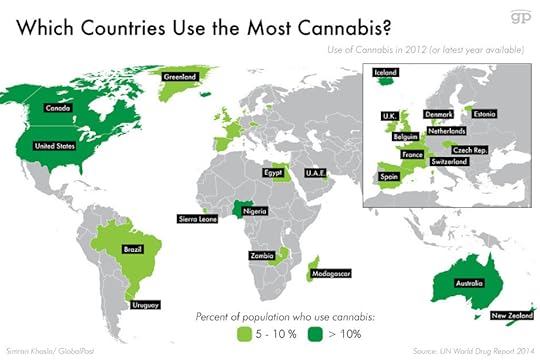
Graphic by author.
The United Nations has found, through what was likely some very careful and focused study, that the following countries smoke the most pot. You think it’s accurate? 
By Simran Khosla, GlobalPost
This article is syndicated from GlobalPost.
30 stunning images of Costa Rica
HOW MANY OF YOUR VACATION DAYS did you use in the last year? If you live in the United States, chances are the answer to that question is somewhere around half of them. Which means you could be taking paid time off to hang out in Costa Rica right now.
And Costa Rica is a pretty sweet place to be, whether you go for its unrivaled ecotourism opportunities, from watching sea turtles nest to ziplining through the rainforest; its 1,000 miles of coastline on both the Pacific and the Caribbean, and the spectacular beaches and surf that go along with it; or its 50 national parks, representing the nation’s unprecedented commitment to preservation and protecting a full 5% of the world’s biodiversity.
Not that anyone really needs convincing, but here are 30 images of Costa Rica that will inspire you to take your vacation time and put it to better use in the months to come. Here’s to restoring our work-life balance, one epic trip at a time. 
This post is proudly produced in partnership with Visit Costa Rica. Find out how Costa Rica is doing its part to Save the Americans.


1
Red-eyed tree frog
Costa Rica is small, just under 20,000 square miles—about the size of two Vermonts. And yet, this country that accounts for just .1% of Earth's land area harbors 5% of its biodiversity. Costa Rica's tropical mountain chains, rainforests, and various islands are home to species both highly endangered and more common, such as the red-eyed tree frog seen above.
Photo: Steve Corey

2
Choose your own beach
Bordered by the Pacific to the west and the Caribbean to the east, Costa Rica has no shortage of beaches. The best part is that, no matter what time of year you visit, if conditions on one coast are less than ideal, all you have to do is travel a few dozen miles overland to access a completely different white-sand paradise.
Photo: Marc Veraart
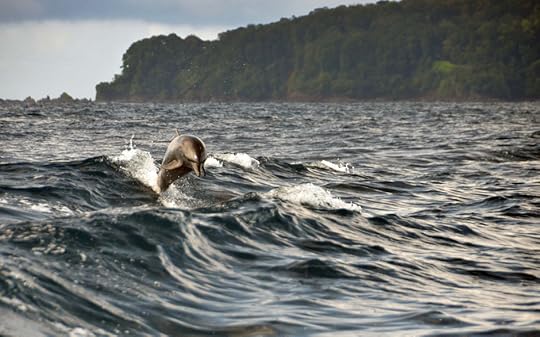
3
Caño Island Biological Reserve
Caño Island Biological Reserve, just one of the country's dozens of protected areas, is located off the Osa Peninsula in southwestern Costa Rica. If you're into marine life and top-notch diving / snorkeling, this is where you should be.
Photo: Costa Rica Tourism Board
Intermission
186
12 differences between a normal friend and a Spanish friend
by Ana Bulnes
Giant manta ray is freed from trash by helpful divers
by Katka Lapelosová
This is what’s beneath the most beautiful ice rink in the world [pics]
by Morgane Croissant

4
Arenal Volcano
Of Costa Rica's 14 volcanoes, Arenal is probably the best known thanks to its near perfect pyramidal shape. The national park that surrounds it shares its name and is located a short drive north of the capital San José.
Photo: Scott Robinson

5
Emperor butterfly
The Emperor butterfly is common in Central America and can grow to have a wingspan of nearly 8 inches. Its iridescent coloration brightens the forests of Costa Rica.
Photo: vasse nicolas,antoine
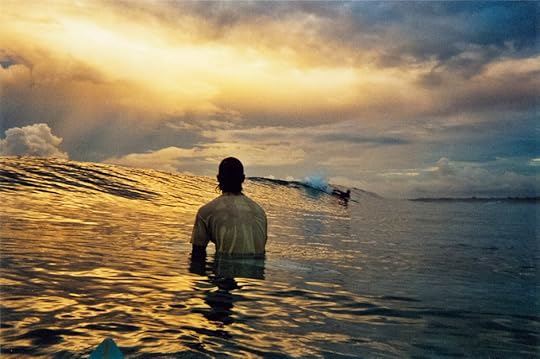
6
Surf at Playa Avellana
Thanks to its dual coasts and favorable features / conditions, Costa Rica has long been a surf destination. Pictured above is Playa Avellana, located on the Nicoya Peninsula. Its waves tend to be mellower than those of the popular Playa Negra farther south.
Photo: Roman Königshofer

7
Manuel Antonio National Park
Near the Pacific town of Quepos, Manuel Antonio draws lots of visitors for its mix of pristine jungle and palm-bordered beaches. Punta Catedral, the point you see in the distance above, is accessed via hiking trails.
Photo: Costa Rica Tourism Board

8
Three-toed sloth
One of Costa Rica's most iconic creatures, the three-toed sloth lives in the trees but is also a capable swimmer. Near Puerto Limón, you can arrange a boat tour for a chance of seeing this beloved animal in its jungle home.
Photo: Jerry Kirkhart

9
Flower at Drake Bay
Costa Rica's biodiversity includes flora as well as fauna, of course. The colors and forms of plant life here are hard to match.
Photo: Costa Rica Tourism Board
Intermission
135
The 22 craziest party hostels around the world
by Matt Kepnes
Story behind the shot: Playa Guiones, Costa Rica
by Branden Eastwood
1
A visual journey through the street art of Cuenca, Ecuador
by Gilda Selis

10
Hammerhead, Cocos Island National Park
Cocos sits 340 miles southwest of mainland Costa Rica (about halfway to the Galápagos) and is an uninhabited national park. If you manage to make it out here, you've probably done so for the diving—some of the best in the world.
Photo: Barry Peters

11
Bajos del Toro
Bajos del Toro is a private reserve, just north of San José, where this waterfall plunges 300 feet from a hole in the cliff face to the bottom of an extinct volcanic crater.
Photo: Steve Jurvetson
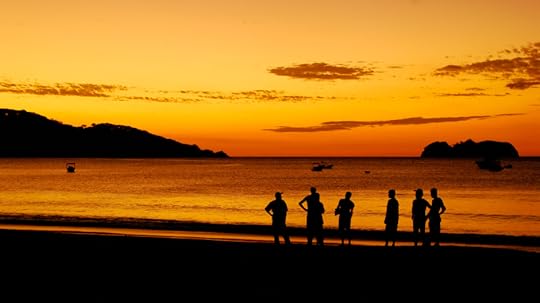
12
Sunset, Playa Hermosa
Guanacaste's Playa Hermosa remains a laid-back alternative to some of the more popular beaches nearby. Find it just south of Culebra Bay on the north Pacific coast.
Photo: Didier Baertschiger

13
Mangrove black hawk, Palo Verde
Palo Verde National Park is set in the valley of the Tempisque River in northwestern Costa Rica, protecting ecologically significant dry forests as well as mangroves along the river. It's a great place to see birds, from macaws to ibis to wood storks, as well as the mangrove black hawk, pictured above.
Photo: Brian Ralphs
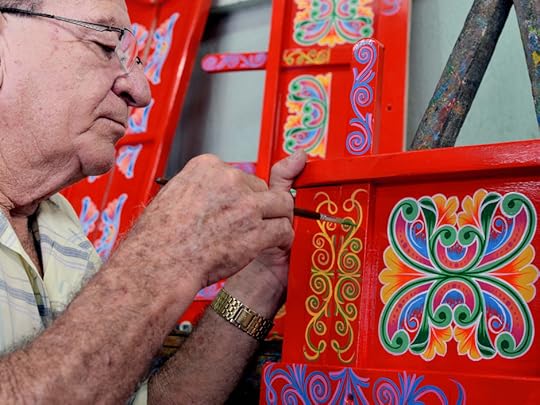
14
Sarchí oxcart painter
On the northern outskirts of San José, set in the foothills that lead up to the Poás Volcano, the town of Sarchí preserves traditional Costa Rican crafts. Chief among them is the oxcart, elaborately painted carriages that were once used to transport highland coffee to port.
Photo: Costa Rica Tourism Board

15
Whale watching, Caño Island
The coast around the Osa Peninsula, where Caño Island lies, sees multiple whale migrations each year, giving it one of the longest whale-watching seasons anywhere in the world.
Photo: Costa Rica Tourism Board
Intermission
362
What bartenders actually think of your drink order
by Lisa Millar-Jones
10
30 of the world’s burliest bungee jumps [PICs]
by Hal Amen
15 Stunning photos that will convince you winter’s the best time to travel
by Rory Moulton

16
Poison dart frog
If you need evidence of Costa Rica's tremendous biodiversity, consider this: The nation is home to 133 known species of frog, many of which are endemic.
This poison dart frog was photographed in the rainforests of the Gandoca-Manzanillo Wildlife Refuge, near the border with Panama.
Photo: Geoff Gallice
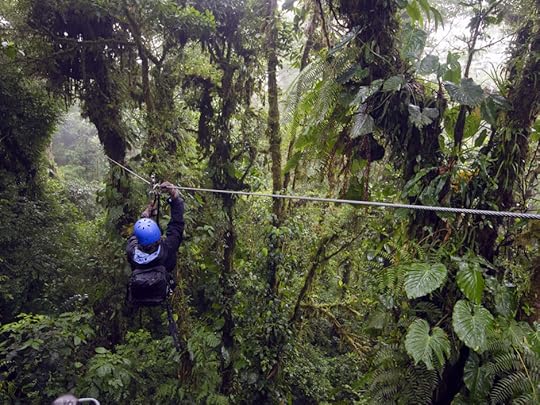
17
Monteverde Cloud Forest zipline
Costa Rica's forests are nearly as diverse as the creatures that live within them. Blanketing the lower reaches of the Tilarán Mountains in the northwest, the Monteverde Cloud Forest stands in near perpetual mist and harbors an extraordinary abundance and diversity of life. Its unique topography and wildlife attracts many tourists, who can choose from a variety of ecotourism excursions and adventure activities such as ziplining through the forest canopy.
Photo: Costa Rica Tourism Board

18
Cacao pods
If you've ever wondered exactly where chocolate comes from, you can find out in Costa Rica. The country's indigenous people were trading in cacao long before Europeans arrived, and today many operations continue to produce high-quality chocolate from local beans.
Photo: Everjean
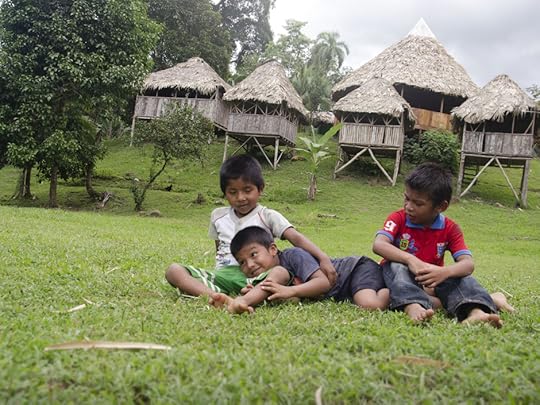
19
Bribri children
The Bribri are one such indigenous people, residing in Costa Rica's Limón Province. Multiple organizations can arrange voluntourism trips to Bribri communities, where you can learn firsthand about their traditional beliefs and practices.
Photo: Costa Rica Tourism Board

20
Nosara surf
Nosara, a small city located on the mountainous Nicoya Peninsula, abuts some pretty awesome Pacific surf.
Photo: Costa Rica Tourism Board
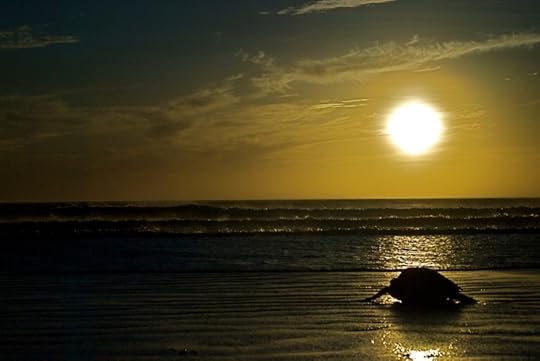
21
Leatherback turtle
Both of Costa Rica's coasts provide vital nesting grounds for endangered populations of sea turtles. Tortuguero National Park, on the Caribbean north of Limón, is recognized as a world leader in turtle conservation and study.
Photo: Fernando Silva
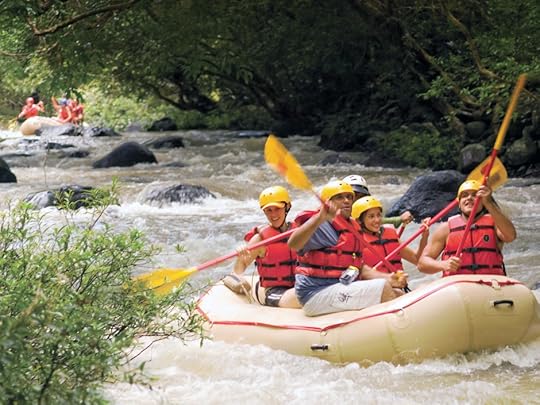
22
Rafting the Pacuare
You can have fun on the water away from the coasts as well. The Río Pacuare flows for some 70 miles from the highlands east of San José to the Caribbean just south of Tortuguero National Park, creating some excellent whitewater along the way.
Photo: Costa Rica Tourism Board

23
Toucan
Few animals scream "tropical paradise" as loudly as the toucan. The bird above was photographed at the La Paz Waterfall, north of San José on Highway 126.
Photo: Costa Rica Tourism Board

24
Life below the Pacific
The abundance of wildlife below the waves is nearly as impressive as that above, which makes Costa Rica one of the world's premier destinations for diving and snorkeling.
Photo: Costa Rica Tourism Board

25
Santa Rosa National Park
Costa Rica's oldest national park (established in 1971) covers the peninsula that forms the northern boundary of the Gulf of Papagayo, in Guanacaste province. Originally created to protect the site of a military battle, the park also contains a wide range of habitats and wildlife.
Photo: Costa Rica Tourism Board

26
Cahuita National Park
Cahuita mainly draws tourists with its excellent reef diving / snorkeling and sea turtle nesting grounds, but its land-based attractions, which include wildlife such as tree sloths, eyelash vipers, and capuchin monkeys, also make it worth a visit.
Photo: Costa Rica Tourism Board
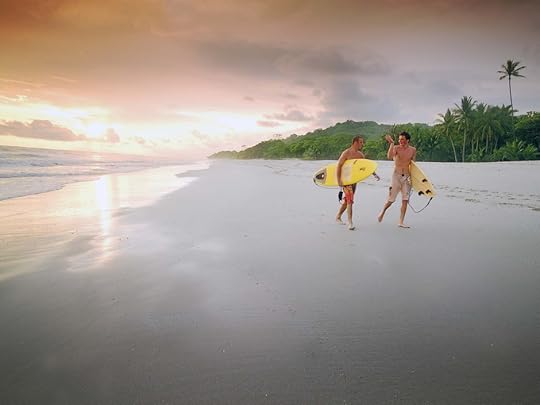
27
Santa Teresa Beach
Near the tip of the Nicoya Peninsula, just north of the Cabo Blanco Natural Reserve, you'll find this beach, which epitomizes everything that makes Costa Rica's shores so great.
Photo: Costa Rica Tourism Board

28
Poás Volcano
Arenal might strike a nice pose from a distance, but you'll want to look Poás right in its face. In the national park of the same name, you can follow a mile-long (round trip) paved trail to the top of the volcanic crater and peer down over eerily colored lagoons.
Photo: Sarah Murray
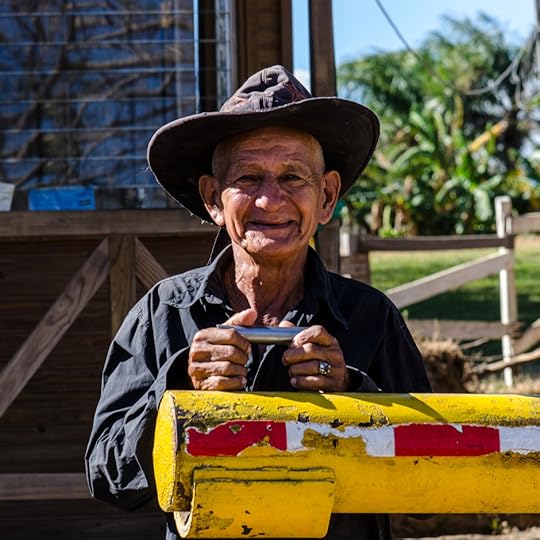
29
Welcome!
Costa Rica's pioneering decision to set aside more than 25% of its territory as protected area rather than develop it means that tourism is a vital component of the national economy. Unlike in other countries around the world, where the effects of tourism are more dubious, Costa Ricans know your visit is helping enable them to preserve their unparalleled natural wonders. You will be welcome here.
Photo: thejaan

30
Sundowner
No matter where you are in Costa Rica, an epic beachside sunset over the Pacific is just a short drive away. Sure beats wasting your vacation days in the office, doesn't it?
Photo: Frontierofficial
Matador Network's Blog
- Matador Network's profile
- 6 followers



